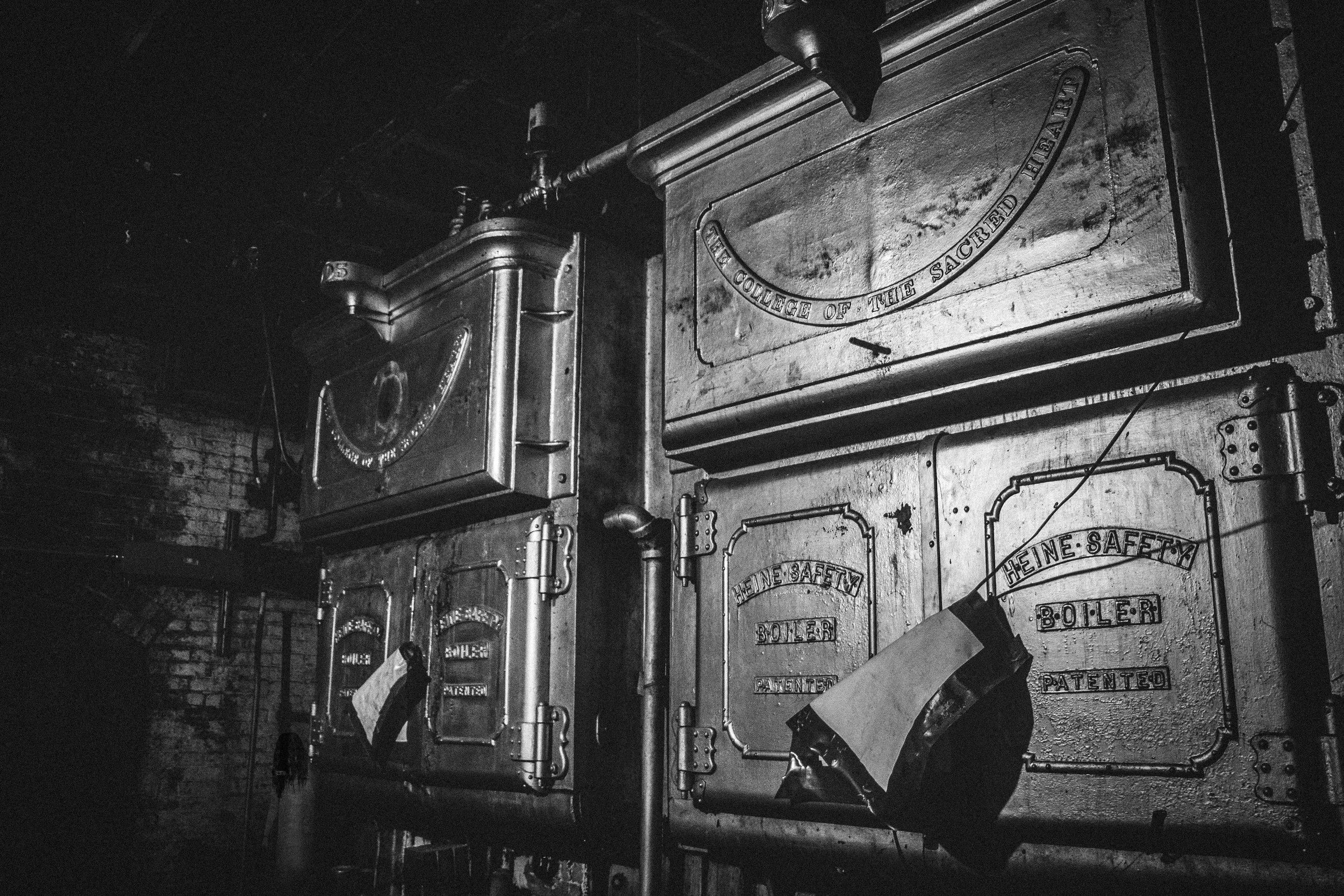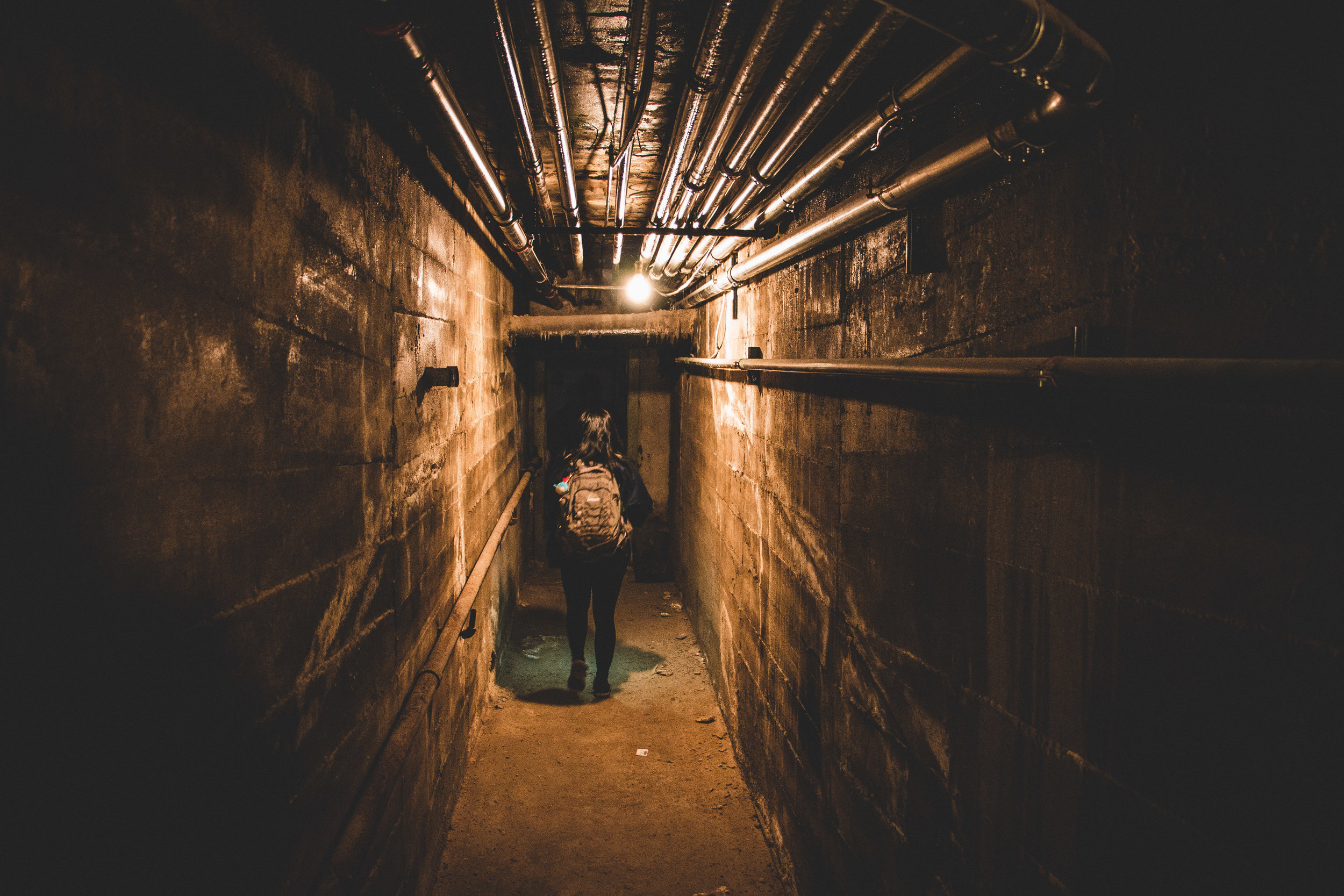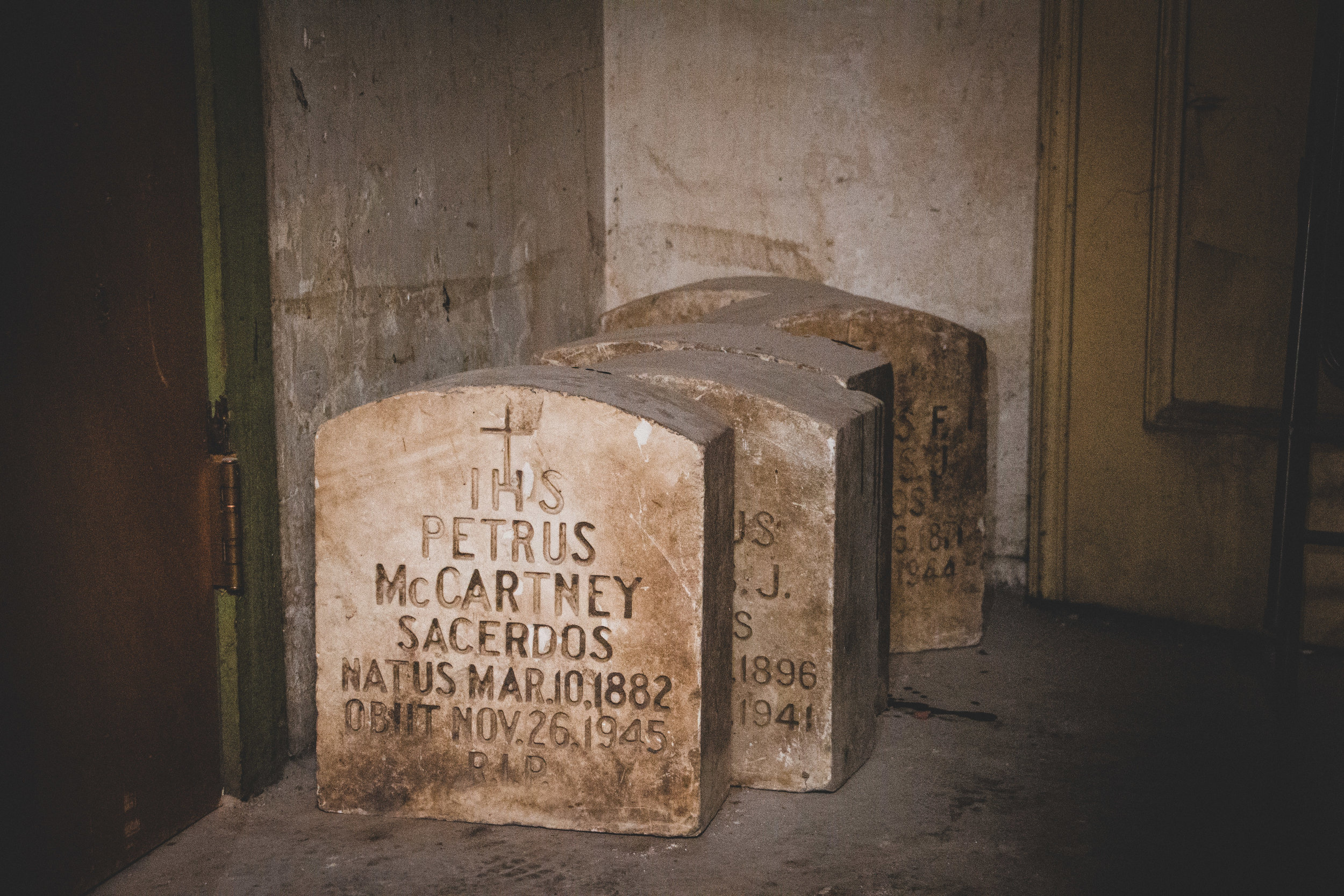What Lies Underneath
Historic photos of main hall, RU Highlander cerca 1920; Black and white boilers; Hallways in the basement connect storage and boiler rooms; Jesuit tombstones in basement of Main Hall //Tyler Delgado
By: Hazel Alvarez, Staff Reporter
Main Hall commands a certain level of respect from passersby. It has character, from the squeaky wooden floors, to the fresh coat of paint, the overall structure and style stands out from the modern cut of the Dayton Memorial Library or the Pomponio Family Science Center. Main Hall stands tall and proud, a symbol of Regis University.
Have you ever walked inside Main Hall? The creaking of the wooden floor boards and the clacking of our steps give Main Hall not only a sense of old house style of comfort, but also a sense that we should tread lightly. The step from the cold of the outdoors into the full blown heat transitions you into the building as you shed little by little the layers of jackets and scarves.
What lies underneath Main Hall is that of a myth. Photographer Tyler Delgado and I uncovered that myth this year!
The steps are steep, so be sure to pay attention when you go down. There lies the two main boilers recently installed from between the 50s-60s, where it hums along bringing that much needed heat throughout the building. The main boilers give Main Hall one of its many characters, one being that it’s warmed by steam heat, unlike the more modern buildings around campus. No, Main Hall has an actual boiler at the basement, which explains why it’s almost near sweltering when you’re on the ground floor and a bit more chilling on the upper floors.
Watch your steps; the uneven floor is a patchwork of alternating brick and concrete. The concrete steep steps give way to wooden ones. The next room over houses the original boilers that can be traced back to 1921. It’s the kind of boiler that you throw coals to keep the fire raging for the entire building. It’s insane really, to think that these are the boilers that have kept Main Hall warm against winters time and time again; and to see them still standing tall and proud to this day. Make sure to keep one eye to floor. If you drop something into the cracks, you can hear the water below.
The next room proves a little more spooky; the lights don’t work, and it’s daunting to navigate through the spaces without a light, relying for your eyes to adjust and praying that you don’t break your body or Main Hall itself. The hums are more distant from here, and it feels colder, and it’s not only because you’re farther from the main boilers, but from something else.
The darkness seems to nip at your heels, urging you to go faster, but not too fast, because the floors are a bit slippery from dust and tiny rocks, and the floors started to rise just a little bit, but thank goodness there’s a tunnel ahead, with actual lights.
Watch your head; the ceiling and floor looks like they’re about to meet each other in the middle, along with the pipes. The pipes seem to be the only indication of some form of navigation but it’s a lot better than the room we came from.
Entering the next room, I am thankful to see someone had the sense to add lighting. It appears to be a normal storage room with cracks in the plaster wall, revealing a covered layer of brick walls. Upon further inspection, a line of tombstones of deceased Jesuits hides in the corner, may they rest in peace. Are these the beds of the ghosts that haunt the Main Hall?
Quickly now, we have to go back, following the pipes that will eventually lead you back to the main boilers, with working lights and some much needed warmth. Ignoring the silence of darkness and potential ghosts (considering Main Hall is haunted), we quickly work our ways past the rough terrain of the floors, but it’s easier now, because we know what lies ahead.
Once we get back to the main boilers, the hums are near deafening, but welcomed, the heat near sweltering, but welcomed. It’s here we catch our breath, and really step back. Layers upon layers of history all in such a small space. The boilers that keep us warm and sweating on the first floor are here; the same boilers that work so diligently against the biting cold outside. This building, with it’s boilers and walls, was built to last, but there’s a certain fragility to it, too, that reminds you of its history and quiet permanence at Regis University.




